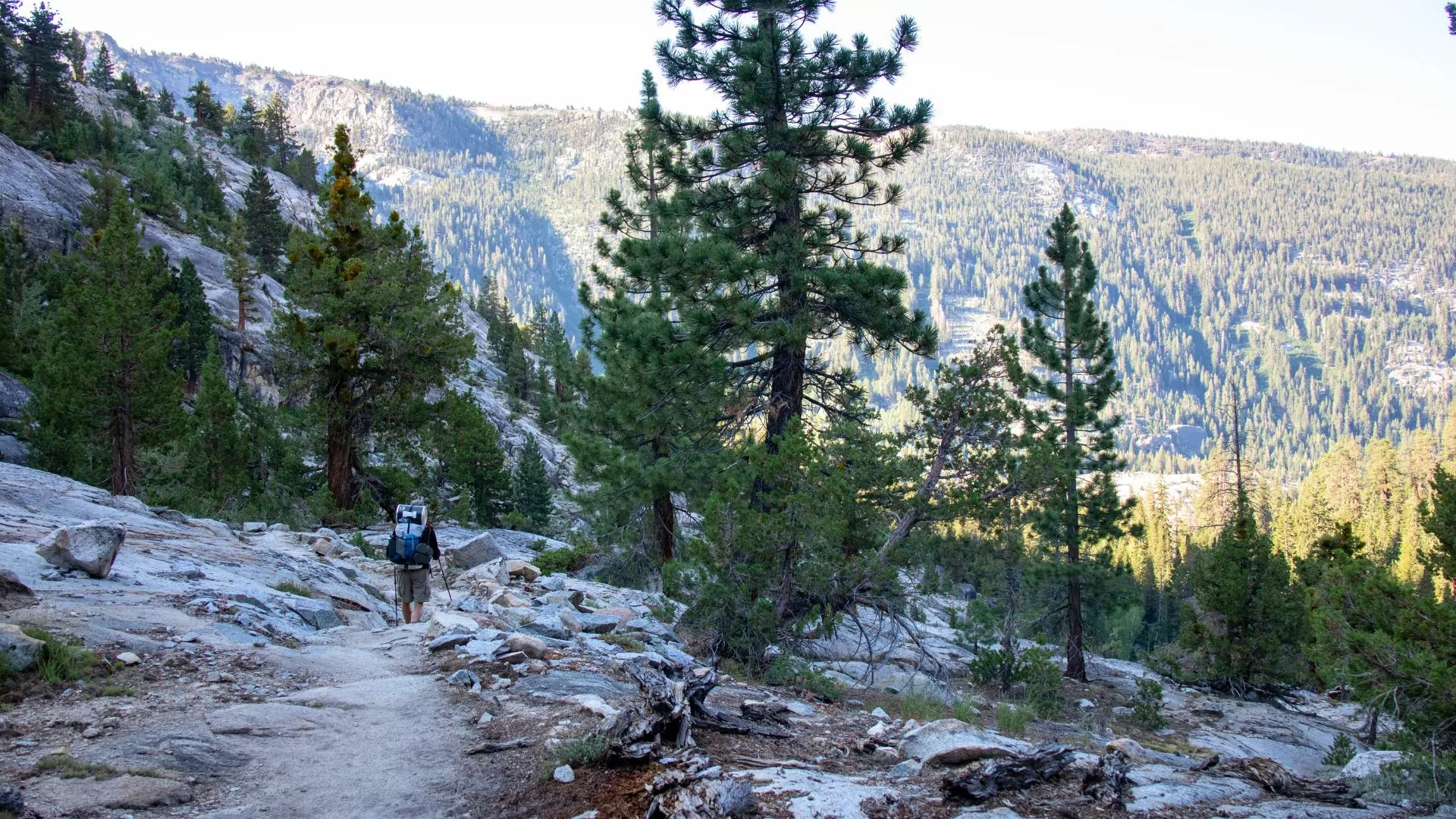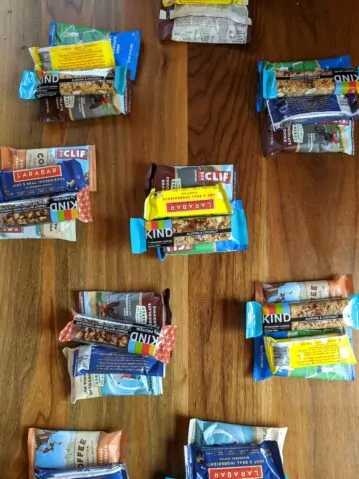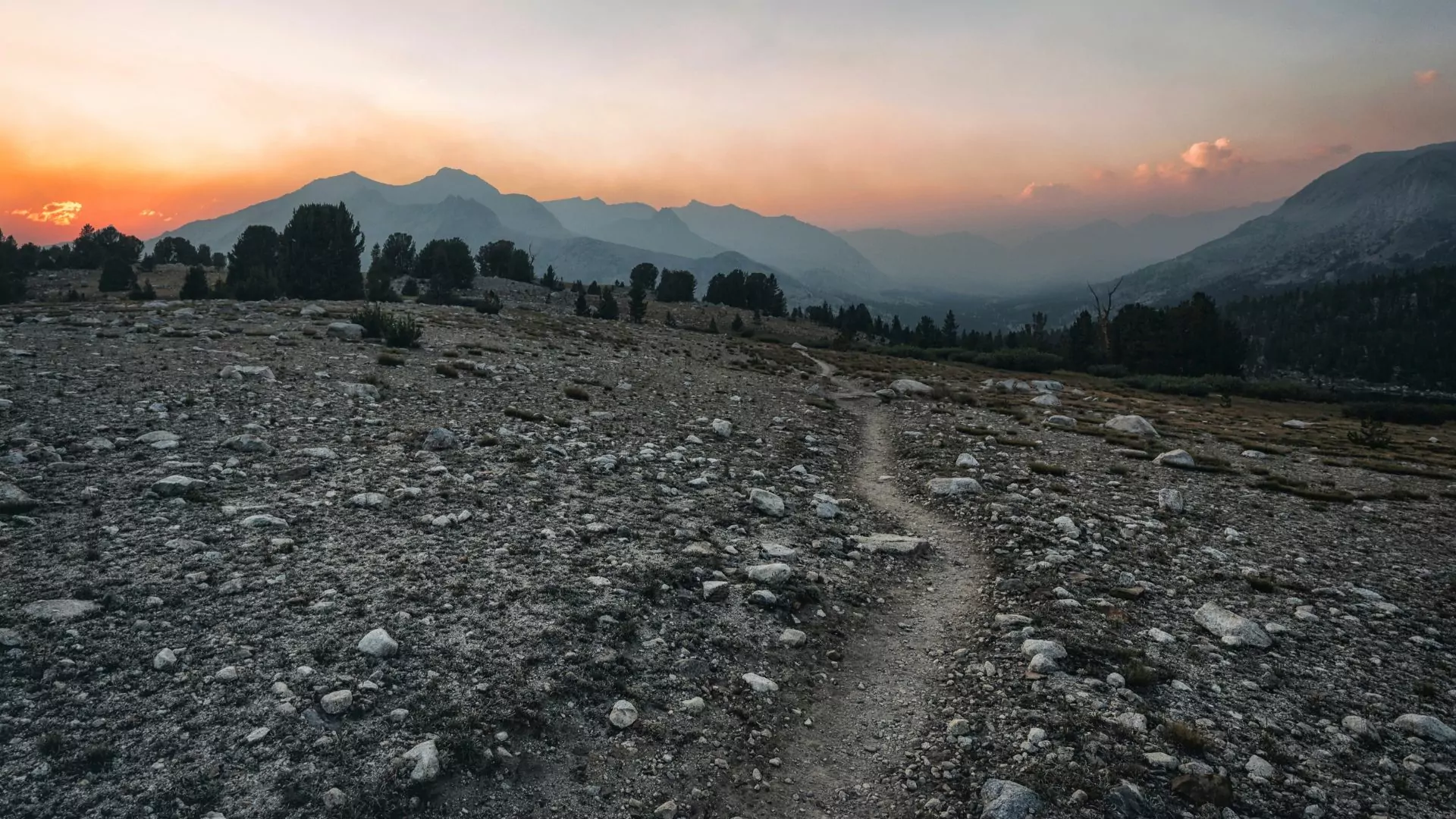Thru Hiking the John Muir Trail

Step, breathe, step, breathe…
That’s all there is to thru-hiking, right?
That’s what I kept telling myself as I climbed the steep switchbacks of Mt. Whitney, the tallest peak in the lower 48 and the start of a much larger journey. My feet crunched on the sandy trail beneath the dim glow of my headlamp, while the moon kept a quiet, watchful vigil overhead. I felt like an ant crawling through towering granite walls that stretched endlessly into the sky. With each step, the weight of my pack and the enormity of the journey ahead pressed down on me. The thin air stung my lungs, my legs burned, yet excitement surged through me stronger than the fatigue. I was finally here—about to embark on the John Muir Trail, with its 211 miles of untamed wilderness, beauty, and challenge.
But as the summit loomed far above, so did the fear of the unknown. Would I be strong enough? Could I handle the unpredictability of nature? Every switchback became a battle between anxiety and hope, the physical challenge pushing me to my limits while my heart raced with anticipation. When I finally reached the flat, rocky expanse of the summit, I pulled out my sleeping bag, layered up in my warmest clothes, and sipped half-frozen water from my crusty old bottle. Watching the sun rise in the east, I felt that familiar peace that only comes from accomplishing something difficult in the wilderness.

The John Muir Trail (JMT) is renowned for being one of the most breathtaking long-distance hiking trails in the world. Stretching through California’s Sierra Nevada mountains it winds through iconic wilderness areas including Yosemite, Kings Canyon,and Sequoia National Parks, as well as the Ansel Adams Wilderness. It takes hikers over high alpine passes, past pristine glacial lakes, and through ancient granite formations—each as awe-inspiring as a national park in its own right.
But while the beauty of the JMT is undeniable, the logistics of permits, resupply points, and navigation can be daunting for even seasoned adventurers. A thru-hike requires preparation far beyond physical conditioning, from managing resupplies and reroutes due to weather or wildfires, to planning meals and dealing with ever-changing trail conditions.
So a bit more than step, breath…
In this article, I’ll share my experience on the John Muir Trail (JMT) as part of my Pacific Crest Trail (PCT) thru hike, focusing not only on the trail itself but also on the logistics of completing this trek. From securing permits and resupplying, to managing weather and physical challenges, I’ll cover what it takes to embark on this unforgettable journey through some of the most stunning scenery in the lower 48.
The Trail
I still remember the feeling of awe when I first saw Rae Lakes, their crystal-clear waters reflecting the surrounding mountains like a mirror. My trail family spent the day jumping into the freezing water bracing ourselves and screaming as we quickly swam back to shore to shiver in the sun before jumping in again. The next morning we all gathered together to do yoga on the beach, laughing whenever someone tumbled over while balancing on one leg. Mornings on the trail often brought moments of peace with their slow ritual of firing up the stove for coffee, rolling out of my sleeping bag and chatting with friends over the logistics of the day. These pockets of serenity were my touchstones, helping to ground me and remind me why I was out there.
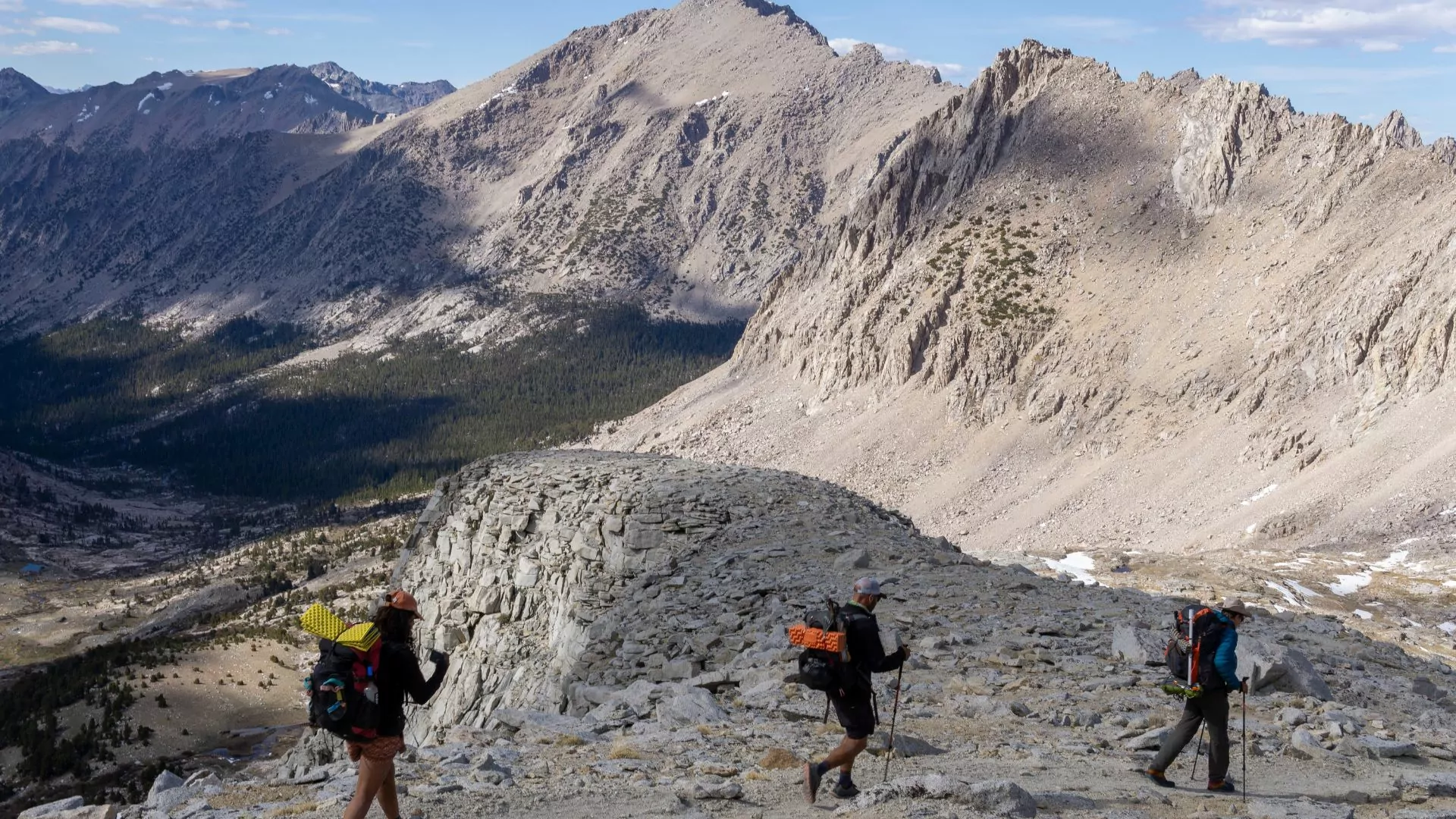 You come to the trail for the views, but you stay for the people. There’s something about the trail that brings everyone together. Maybe it’s the shared journey, or the fact that anyone with a backpack immediately feels like a kindred spirit, like someone who knows at a deeper level exactly what you’re going through. Conversations flow easily: “Remember that crazy storm last week?” or “What did you think of the climb over Glen Pass?” or “How many days of food are you packing for this next section?” But it might just be the humbling reality of everyone being dirty, tired, and at peace. It’s hard not to laugh when you see a Fortune 500 CFO in the morning, disheveled, talking about a funny rash while pulling holey socks over dirt-caked feet. Out here, titles don’t matter, just the reality of the world around you.
You come to the trail for the views, but you stay for the people. There’s something about the trail that brings everyone together. Maybe it’s the shared journey, or the fact that anyone with a backpack immediately feels like a kindred spirit, like someone who knows at a deeper level exactly what you’re going through. Conversations flow easily: “Remember that crazy storm last week?” or “What did you think of the climb over Glen Pass?” or “How many days of food are you packing for this next section?” But it might just be the humbling reality of everyone being dirty, tired, and at peace. It’s hard not to laugh when you see a Fortune 500 CFO in the morning, disheveled, talking about a funny rash while pulling holey socks over dirt-caked feet. Out here, titles don’t matter, just the reality of the world around you.
Sooner or later you start to feel more and more that this is home, like you couldn’t imagine living any way other than this, as a part of nature as opposed to a visitor in it. As the miles add up and the days blend together, you realize that hiking the John Muir Trail is more than just putting one foot in front of the other. It’s an intimate experience with nature, a dance between the physical challenge and the overwhelming beauty that surrounds you. Every ascent, every rocky pass, and every frigid night spent under the stars carves out a deeper appreciation for both the wilderness and your own ability to endure it.
John Muir Trail Rae Lakes Loop
The trail strips away the noise of everyday life, replacing it with the steady rhythm of your steps, the whisper of wind through pine trees, and the mountain chickadee’s insistent calls of “cheese-bur-ger.” As the trail challenges you physically and mentally, it also offers moments of pure serenity—whether it’s watching the sun rise over distant peaks or sharing a laugh with fellow hikers over dinner. It’s in these moments that the JMT becomes more than just a journey through mountains; it becomes a journey inward, a place where the wilderness reflects your own strengths and vulnerabilities.
Permits
(AKA Red Tape)
Securing a permit for the JMT can be one of the toughest parts of planning the hike, as demand far exceeds availability. Since the trail crosses multiple wilderness areas and National Parks, permits are tightly regulated to protect the fragile environment. Most hikers start either at Happy Isles Trailhead in Yosemite Valley or at the Mt. Whitney Portal, and the permit system is based on your starting location.
Northbound hikers from Whitney Portal get permits through the Inyo National Forest, while those starting in Yosemite apply through the Yosemite National Park system. To boost your chances of securing one, remain flexible with your dates and trailheads, and be ready when permits open. For southbound hikers from Yosemite to Whitney, permits become available 24 weeks in advance. For northbound hikes from Whitney, permits are issued through a lottery system from February 1st to March 1st, with a second lottery on April 22nd.
The Pacific Crest Trail Association offers a helpful guide to understanding the permit process, but the bottom line is this: you need a permit, they’re notoriously hard to get, and you’ll be competing with everyone else who wants to spend three weeks in one of the most beautiful places in the U.S. The JMT lottery is highly competitive, with only about 3% of applicants getting a permit, so it’s essential to do your research and stay flexible.
Resupplies
(So What Do We Eat?)
I handled my food resupplies like many PCT thru-hikers do: hiking miles off-trail to hitchhike to the nearest town, or stopping at small resorts and hoping they had more to offer than honey buns and beef jerky, knowing my wallet was about to take a hit. Another option many JMT thru-hikers opt for is mail drops, where they buy food in advance, pack it into boxes (or five-gallon buckets), and ship them to resupply locations along the trail before stuffing them unceremoniously into bear cans. Since there are only really three to four resupply points on the JMT, this can either be a fun way to get excited in the months leading up to your hike, or tedious addition to your thru hike prep To Do list.
Personally, I broke my resupplies into three sections: Kennedy Meadows South to Kearsarge Pass, Kearsarge Pass to Vermillion Valley Resort (VVR), VVR to Mammoth, and Mammoth to Yosemite Valley. Since I started the JMT as part of my PCT thru-hike, I carried extra food for the first section and moved a bit faster than those starting fresh on the JMT, as I had already logged over 700 miles on the PCT by that point and was feeling fit and dialed.
Food is easily my least favorite part of thru-hiking. I’ve met hikers who spent months preparing—buying local produce, crafting recipes, dehydrating meals, packing them neatly into ziplocs, and carefully accounting for daily caloric intake and what garnish looks best on pancakes. (Incidentally, that’s exactly what I do now while guiding my Wildland Trekking trips.) While on the flip side, I’ve also seen people stuff their bear cans full of trail mix and survive on kibble.
Personally, I take the middle ground: packing high-calorie, lightweight, non-perishable foods I can buy from small mountain-town general stores with limited options. The result is a lot of highly processed, dense, and repetitive meals. Pop-Tarts and instant coffee for breakfast, tuna and cheese wraps for lunch, and the classic ramen bomb (ramen mixed with instant mashed potatoes) for dinner with an oreo sleeve for dessert.
When to Hike
(What to Expect from the Sky?)
When it comes to weather on the John Muir Trail, timing is everything. The ideal window to hike the JMT is generally between mid-July and late September, when the snow has mostly melted from the high passes, mosquito season is over, and temperatures are more favorable. However, this window can vary depending on the snowpack from the previous winter. In heavy snow years, trails may be treacherous until later in the summer, and early-season hikers may still encounter lingering snowfields or high river crossings. On the flip side, attempting the trail too late in the season brings the risk of early snowstorms and colder temperatures, especially at higher elevations.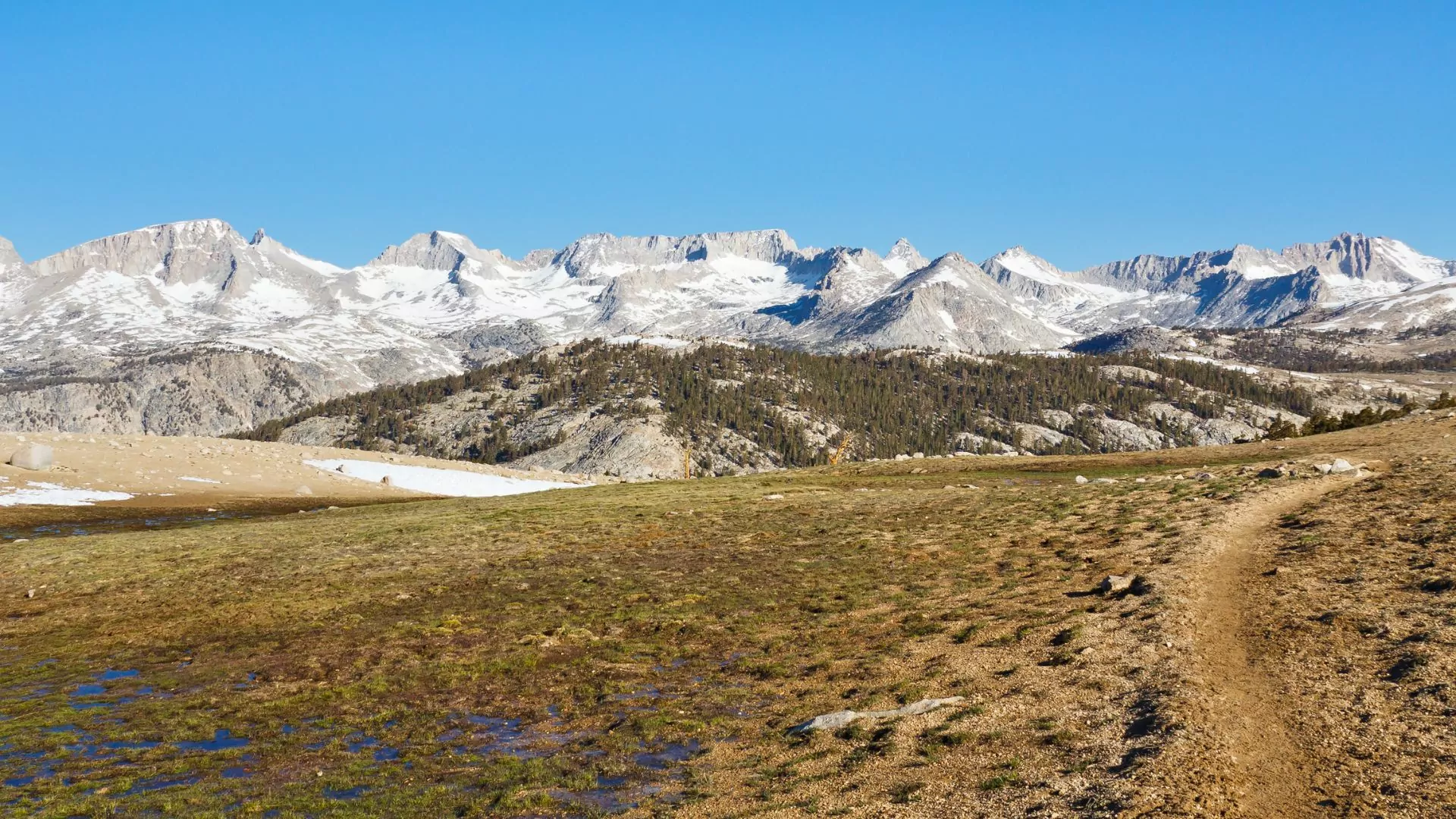 During the prime hiking months, daytime temperatures typically range from the 60s to low 80s in the lower elevations, while higher elevations and exposed passes may be significantly cooler. At night temperatures can drop below freezing, particularly in the alpine sections of the trail. Hikers should be prepared for sudden weather changes, as weather in the alpine can be unpredictable. Thunderstorms are common in the afternoons, especially in July and August, and can bring heavy rain, lightning, and even hail. Proper layering, a quality rain jacket, and a shelter that can withstand wind and rain are essential to stay safe and comfortable on the trail. I’ve seen seasoned hikers break down on the trail from unrelenting mosquitos or when sheets of rain ruin their sleeping bags due to a lack of preparedness for bad weather.
During the prime hiking months, daytime temperatures typically range from the 60s to low 80s in the lower elevations, while higher elevations and exposed passes may be significantly cooler. At night temperatures can drop below freezing, particularly in the alpine sections of the trail. Hikers should be prepared for sudden weather changes, as weather in the alpine can be unpredictable. Thunderstorms are common in the afternoons, especially in July and August, and can bring heavy rain, lightning, and even hail. Proper layering, a quality rain jacket, and a shelter that can withstand wind and rain are essential to stay safe and comfortable on the trail. I’ve seen seasoned hikers break down on the trail from unrelenting mosquitos or when sheets of rain ruin their sleeping bags due to a lack of preparedness for bad weather.
Physical Challenge
(How Much Type 2 Fun is in Store?)
Physical discomfort is an unavoidable part of any thru-hike, and the John Muir Trail is no exception. From the moment you strap on your heavy pack, your body feels the strain—shoulders ache, hips bruise, and your feet are throbbing by the time you get to camp each night. Blisters form and burst, sweat drips into your eyes while your pack chafes your hips raw, and that’s all before the rain starts as you’re going over a 12,000ft pass.
The relentless up-and-down nature of the trail punishes your knees and quads, while the high altitude leaves your lungs burning and heart racing. Sleeping on the hard ground, often in freezing temperatures, means getting up stiff and sore, like your body doesn’t quite wake up until you’re a couple miles into your day. Then there’s the constant hunger—your body burns thousands of calories each day, and no matter how much you eat, it never feels like enough. Fatigue sets in, making those last few miles to camp seem longer…
But the views are worth it. Every day on the trail feels like walking through a postcard. The nature that surrounds you constantly reminds you why you’re out here, doing this seemingly arbitrary thing. In the grand scheme, it might not be that important—but in the moment, it’s everything. There’s a rhythm to the journey, staring at your feet as you slog up a steep climb, then stopping to catch your breath and remembering you’re on the edge of a cliff, with snow-capped peaks above and ice-blue lakes below. Twisted, ancient trees, weathered by countless winds, stand sentinel as you pass between their outstretched limbs. The trail winds through vast fields of jagged rock, where stocky marmots and scurrying pikas call out to one another, warning their friends that slow, lumbering humans are once again passing through their home.
Bringing it All Home
(Wildland Is the Magic You’re Looking For)

If you’re thinking about hiking the John Muir Trail, know this: it’s an experience that will challenge you, inspire you, and change you. The beauty of the Sierra Nevada is unparalleled, and the journey offers not just a physical challenge, but an opportunity for personal growth, reflection, and a deeper connection to nature. Yes, the logistics can feel overwhelming—the permits, the resupply planning, the physical preparation—but don’t let that deter you. The adventure is worth every ounce of effort.
For those who want to focus more on the experience and less on the planning, consider opting for a guided trip (ask for Austin B, and I’ll be your guide!). With Wildland Trekking, the details are taken care of, allowing you to fully immerse yourself in the wonder of the trail. You’ll carry the weight of the hike, but not the weight of logistics, giving you the freedom to soak in the beauty, camaraderie, and each repetition of step, breath.
So go for it—take that first step. The John Muir Trail is waiting, and it’s ready to leave its mark on you. Not just in the calluses on your feet or the soreness in your muscles, but in the quiet confidence that you can take on challenges, find joy in the struggle, and truly be at home in the wild.



